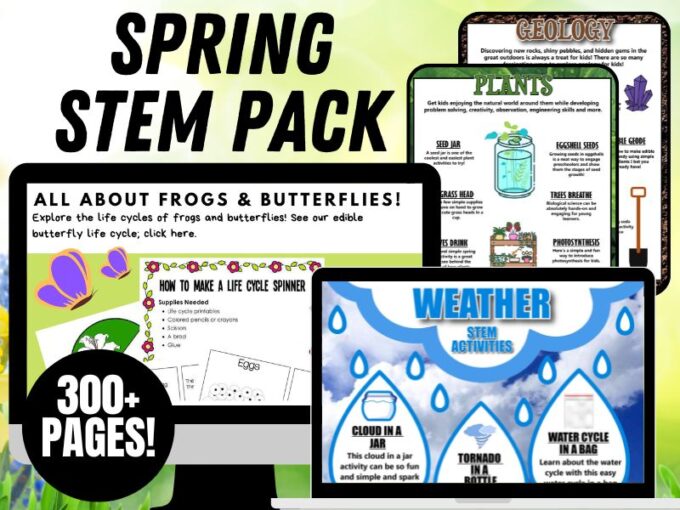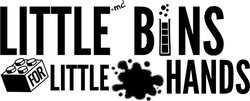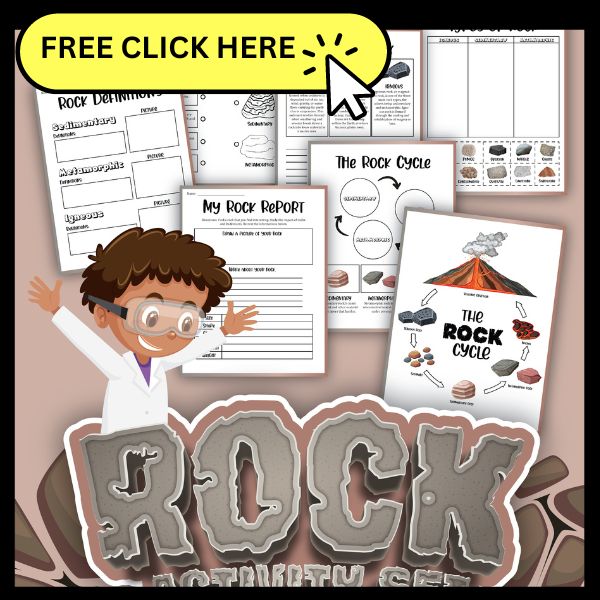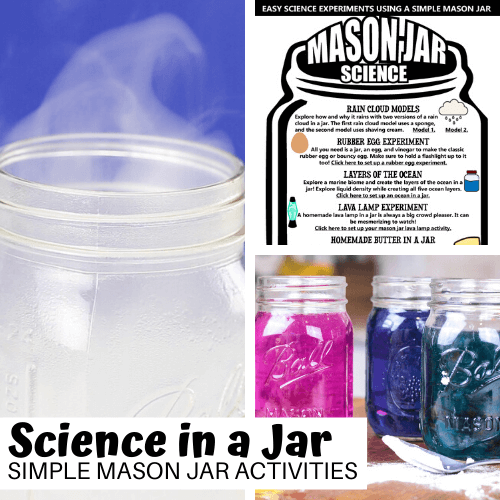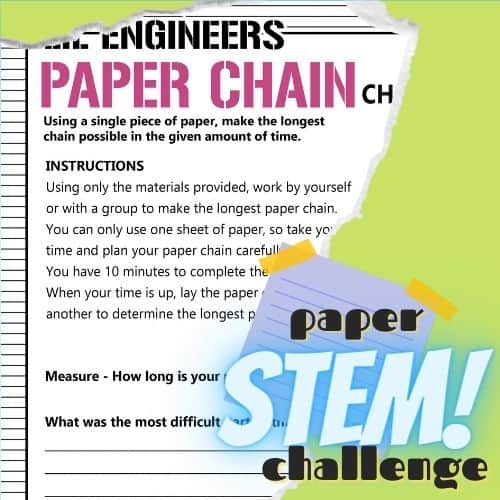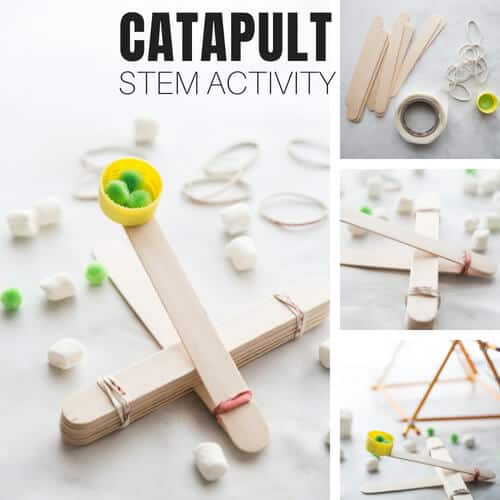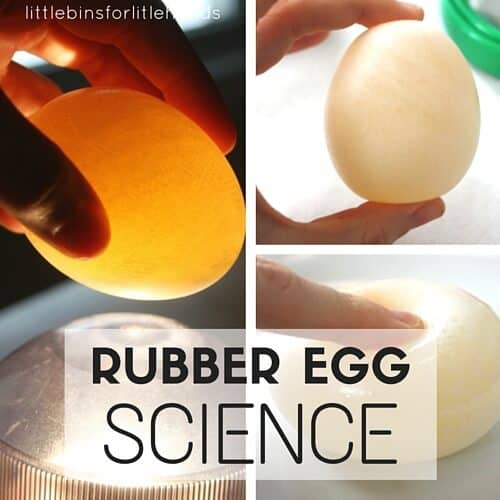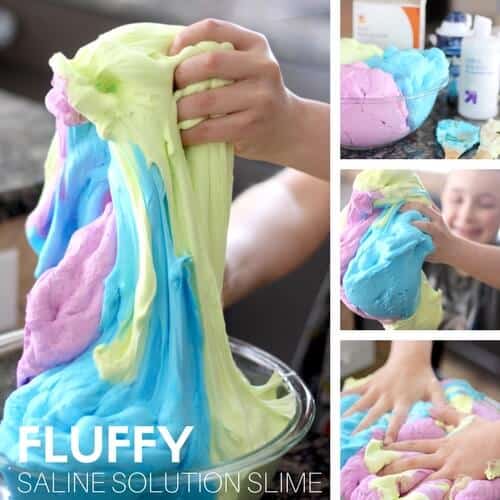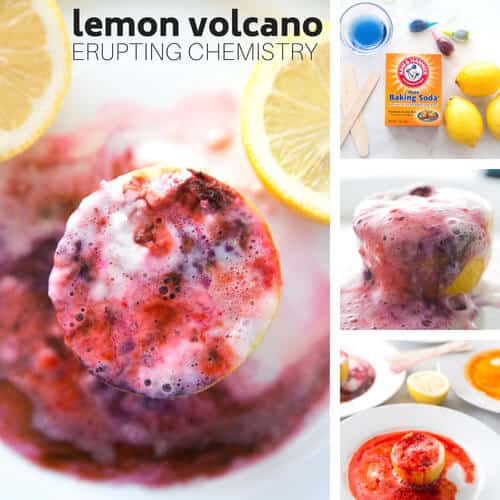My son is also a rock hound, always bringing back a new and unusual-looking rock from one of the nearby beaches too. Our rock collection is ever-changing and this month, he has been learning about rocks, minerals, and natural resources. What better activity than to try out a Starburst rock cycle activity where you can explore all the stages with one simple ingredient! Grab the free rock cycle pack to add to this hands-on geology activity.
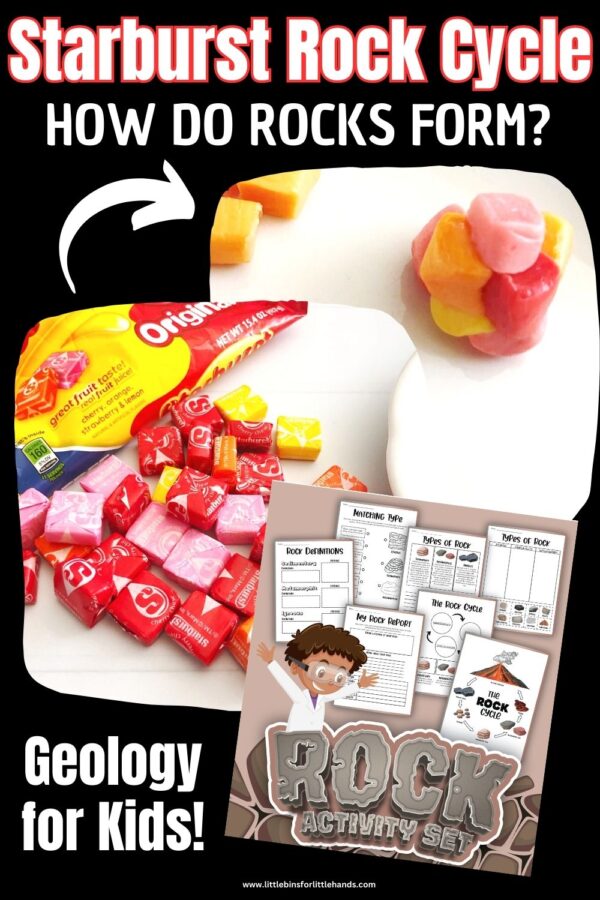
Explore Rocks With Edible Rock Cycle
In my experience, kids love candy science, my son especially. Nothing says hands-on learning better than edible science! How about an edible rock cycle made out of Starburst candy? Pick up a bag the next time you are at the grocery store!
LOOK: 15 Amazing Candy Science Experiments
Add this simple rock activity with just one ingredient to your science or STEM lesson plans this season. Let’s dig in if you want to learn more about the rock cycle. While you’re at it, make sure to check out these other edible rock activities.
What Is Earth Science For Kids?
Earth Science is the study of the earth, and everything that physically makes up the earth and its atmosphere. From the soil we walk on, to the air we breathe and the oceans we swim in.
What do you learn in earth science? Earth Science topics include the 4 main branches of Earth Science, which are:
- Geology – the study of rocks and land.
- Oceanography – the study of oceans.
- Meteorology – the study of weather.
- Astronomy – the study of stars, planets, and space.
Let’s learn about the steps of the rock cycle, and then get to making our starburst candy rocks! Grab a package of Starburst candy and get them unwrapped. We have some chopping to do to make the sediment!
Rock Cycle Facts
Beneath the layers of dirt on the Earth’s surface are layers of rock. Over time these layers of rock can change shape and form.
When rocks heat up so much that they melt, they turn to a hot liquid called lava. But as lava cools down, it turns back to rock. That rock is an igneous rock.
Over time, due to weather and erosion, all rocks can break down into smaller parts. When those parts settle, they form sedimentary rock. This change of rock forms is called the Rock Cycle.
Types of Rocks
The three main rock types are igneous, metamorphosis, and sedimentary.
Sedimentary Rock
Sedimentary rocks are formed from pre-existing rocks broken down into tiny particles. When these particles settle together and harden, they form sedimentary rocks.
They form from deposits that accumulate on the Earth’s surface. Sedimentary rocks often have a layered appearance. Sedimentary rock is the most common rock type found at its surface.
Common sedimentary rocks include sandstone, coal, limestone, and shale.
Metamorphic Rock
Metamorphic rocks started out as some other type of rock, but have been changed from their original form by heat, pressure, or a combination of these factors.
Common metamorphic rocks include marble, granulite, and soapstone.
Igneous Rock
Igneous forms when hot, molten rock crystallizes and solidifies. The melt originates deep within the earth near active plates or hot spots, then rises toward the surface, like magma or lava. When it cools, igneous rock is formed.
There are two types of igneous rock. Intrusive igneous rocks crystallize below Earth’s surface, and the slow cooling there allows large crystals to form. Extrusive igneous rocks erupt onto the surface, cooling quickly to form small crystals.
Common igneous rocks include basalt, pumice, granite, and obsidian.
Watch The Video:
Get Your Free Printable How Do Rocks Form Pack
Rock Cycle Activity
Supplies:
- Starburst candy pieces
- Ziplock bag or empty Starburst bag
- Small cup
- Plastic knife
- Plate
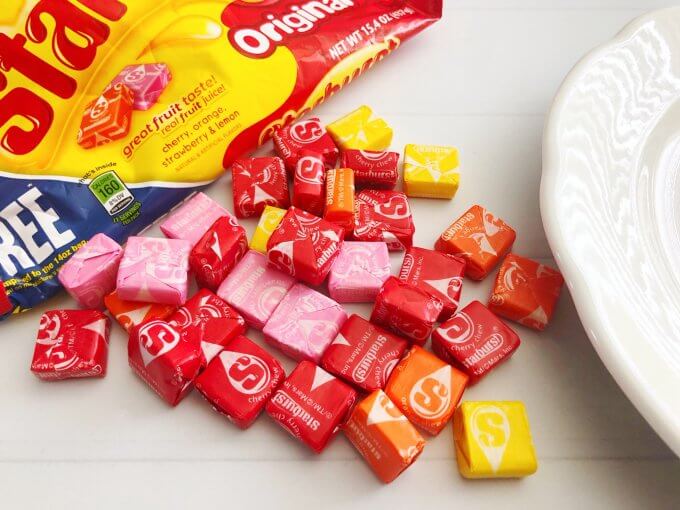
Instructions:
STEP 1: Cut one of each color Starburst into fourths to act as sediments.
STEP 2: Compact the pile of Starburst sediments together but do not form them, this will act as the Sedimentary Rock.
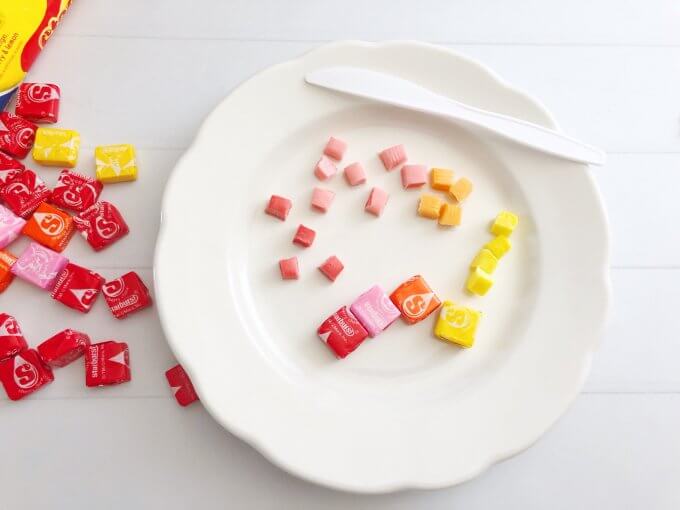
STEP 3: Apply heat and pressure to the “Sedimentary Rock” with your hands or press into a ziplock/Starburst bag. This can be any shape and will act as the Metamorphic Rock.
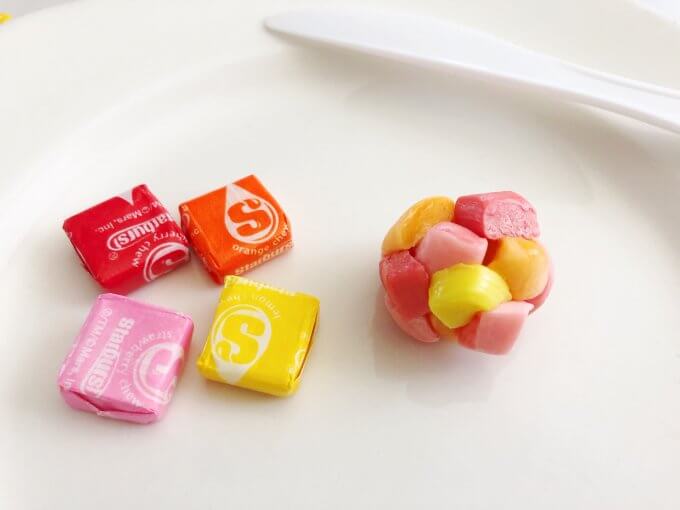
STEP 4: Place the “Metamorphic Rock” in a small bowl or on a plate and heat in the microwave for 30 seconds to turn the “Metamorphic Rock” into Magma.
HEAT WARNING: You can use a heat source such as a hairdryer if a microwave or oven is not available. The results will vary! Candy will be HOT after using a heat source. Use caution at all times! Please make sure all materials are cool to the touch before letting the kiddos handle the candy rocks.

STEP 5: Once the “Metamorphic Rock” cools it will then be an “Igneous Rock”
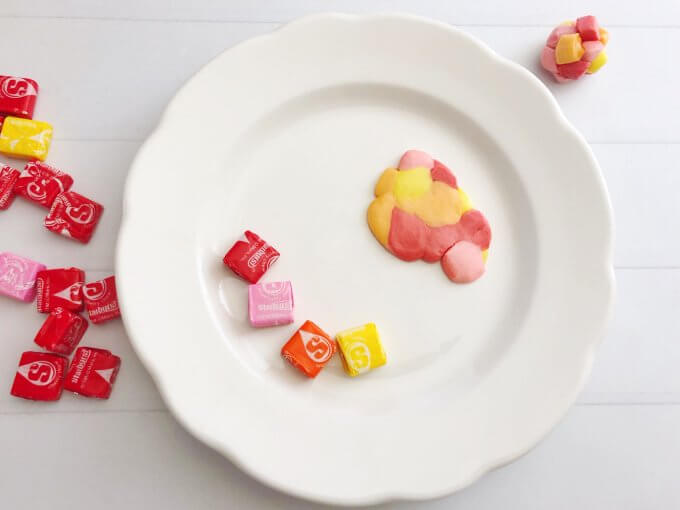
STEP 6: When weathering and erosion happen it will turn the “Igneous Rock” back into sediments.
LOOK: Soil Erosion For Kids
Tips For A Rock Cycle Activity in the Classroom
If candy is not appropriate, this rock cycle activity could also be done with bits of modeling clay to explore the sedimentary and metamorphic phases. You can not heat the clay, but it still gives you an idea of the process!
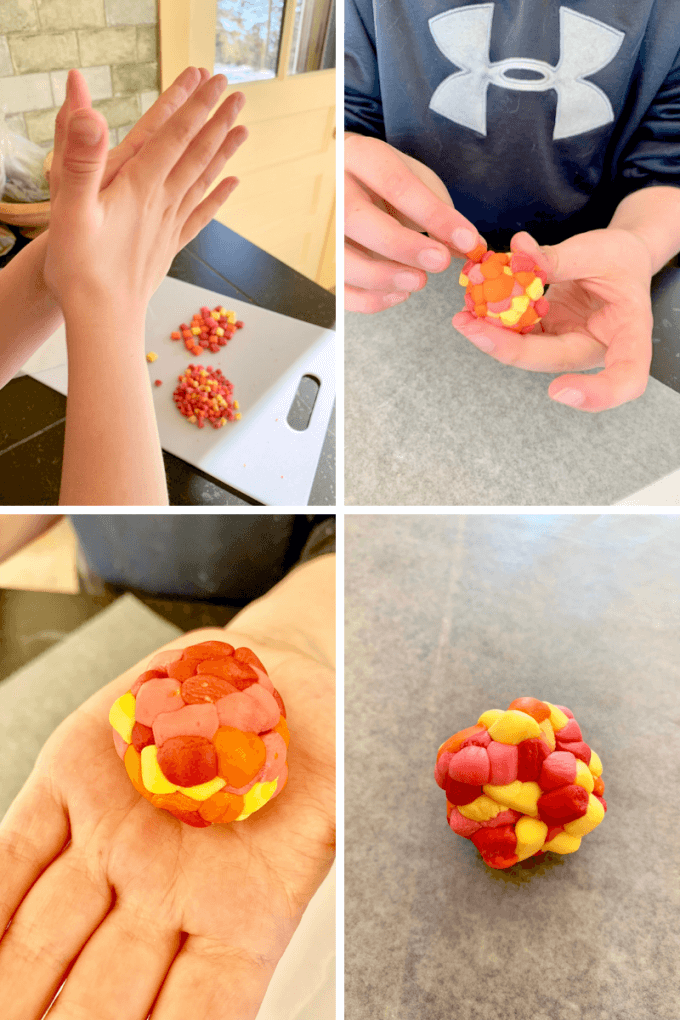
Similarly, if you can not use the heat necessary to turn the candy into igneous rock, you can still try out the first few steps of the rock cycle with the starburst candies.
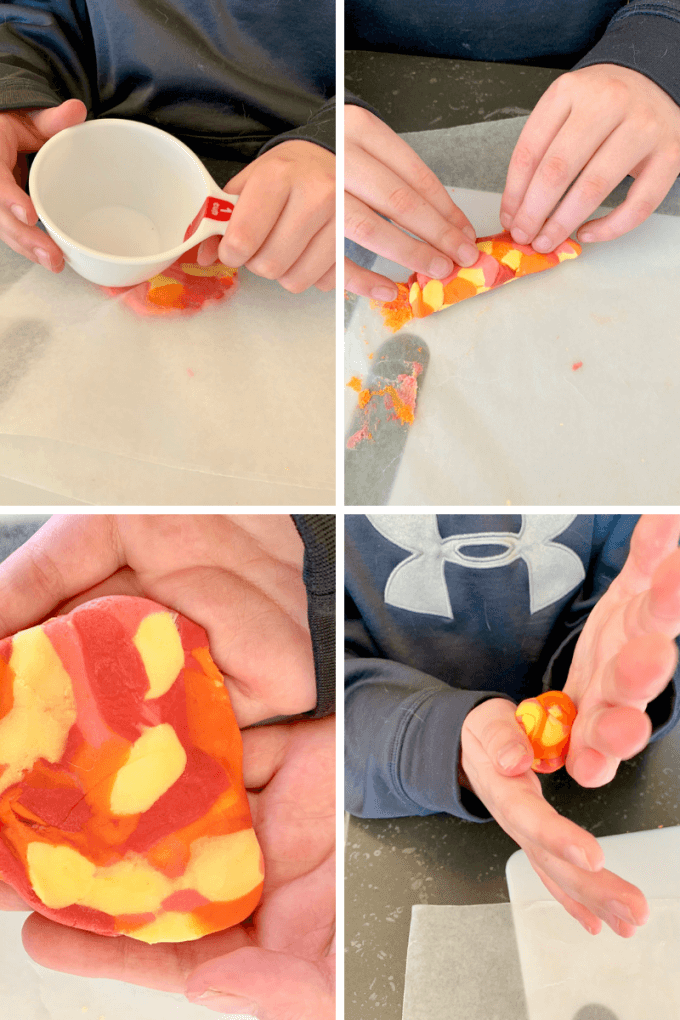
More Fun Earth Science Activities
When you finish this rock cycle activity, why not explore more earth science with one of these ideas below. You can find all our geology activities for kids here!
Explore the stages of the rock cycle with a crayon rock cycle!
Why not grow sugar crystals or make edible geodes!
Explore the layers of soil with simple LEGO bricks and with an edible soil layers model.
See tectonic plates in action with this hands-on project.
Grab some colored sand and glue for this fun layers of the earth activity.
Learn all about volcanos with these volcano facts, and even make your own volcano.
Learn about how fossils are formed.
Helpful Science Resources
SCIENCE VOCABULARY
It is never too early to introduce some fantastic science words to kids. Get them started with a printable science vocabulary word list. You will want to incorporate these simple science terms into your next science lesson!
WHAT IS A SCIENTIST
Think like a scientist! Act like a scientist! Scientists like you and me are also curious about the world around them. Learn about the different types of scientists and what they do to increase their understanding of their area of interest. Read What Is A Scientist
SCIENCE BOOKS FOR KIDS
Sometimes the best way to introduce science concepts is through a colorfully illustrated book with characters your kids can relate to! Check out this fantastic list of science books that are teacher approved and get ready to spark curiosity and exploration!
SCIENCE PRACTICES
A new approach to teaching science is called Best Science Practices. These eight science and engineering practices are less structured and allow for a more free**-**flowing approach to problem-solving and finding answers to questions. These skills are critical to developing future engineers, inventors, and scientists!
DIY SCIENCE KIT
You can easily stock up on the main supplies for dozens of fantastic science experiments to explore chemistry, physics, biology, and earth science with kids in preschool through middle school. See how to make a DIY science kit here and grab the free supplies checklist.
SCIENCE TOOLS
What tools do most scientists commonly use? Grab this free printable science tools resource to add to your science lab, classroom, or learning space!
Printable Geology Activities Pack
If you’re looking to have all of your printable activities in one convenient place, plus exclusive worksheets with a spring theme, our 300+ page Spring STEM Project Pack is what you need!
Weather, geology, plants, animal life cycles, and more!
